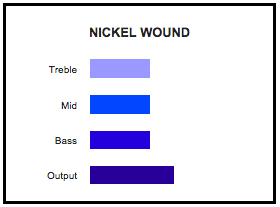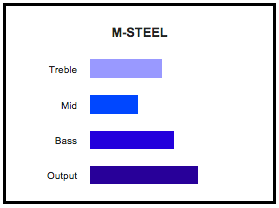Guitar strings are an essential part of a guitarist’s tone, and choosing an appropriate string for your playing style and genre is essential for getting the most from your instrument. What you put on your guitar should be a decision and not the result of brand loyalty. After all, strings are the first link in your signal chain and there’s real science that goes into string design and construction.
In the early days of guitar, there were not many options available, and the materials and construction were comparatively primitive to what we have today. These days, strings come in a variety of gauges, constructions and materials, each with different characteristics that can have a significant impact on comfort, playability and tone.
The first steel string acoustic guitars came on the scene around 1900, and electric guitars followed in the ‘20s. Broadly speaking, steel acoustic and electric guitar strings are not that different. They each consist of a wrap wire wound around a core wire. However, the selection of materials and construction methods manifest in very different strings, each with their own characteristics and uses.
Guitar String Construction
String construction and materials have a significant impact on string flexibility, which is reflected in the playing experience and tone; and while every company has its own recipe for winding strings they do share some similarities.
At the core is a six-sided high-carbon steel wire, typically called core or music wire. Music wire is hexagonal, as the edges give the outer wrap wire something to grab. The formulation for winding the string, including the tension and the number of wraps manufacturers use, are regarded as trade secrets as it’s that formula that gives a string its particular vibration and sound.
String Gauge and Flexibility
All things being equivalent, pickups, set up, amp, cables, etc., if you play a set of GHS Boomers against a set of Ernie Ball Slinkys or D’Addario XLs of the same gauge and materials, they will sound different, and the reason is their construction and resulting flexibility.
Flexibility is the result of several construction factors, including the size of the core wire relative to the size of the wrap wire and how tightly the wrap wire is spun around it. If a string is wound too tightly, it sounds dull; if you wind it too loosely, it's not going to have a particularly good response or output. The alloy of the wire also contributes to flexibility, as it determines the strength and other characteristics of the wire.
String Gauge and Tone
The gauge of your string plays a large role in shaping the voice of your guitar. For strings constructed from the same materials and with the same methods, heavier strings typically will offer better overall tone, but the idea that heavier-gauge strings mean better tone is at best only partially true.
Lighter gauge strings are easier to manipulate and easier to chord, and because they offer less tension they are well suited for wide bends and effortless vibrato. Heavier hands, however, may push the strings sharp, or break strings more often.
Heavier strings will generate more output from your guitar, delivering a fatter, singing character, but the accompanying stiffness can result in too much string tension, which will reduce sustain, clarity and responsiveness and sound “choked.”
There’s a balance to be struck between flexibility and string gauge, and materials play an important role in determining your sweet spot.
String Materials Breakdown
Contemporary steel acoustic guitar strings are commonly available with either 80/20 bronze or phosphor-bronze wrap wire. The 80/20 bronze strings present a clear, bright, bell-like tone while the phosphor bronze imparts a warmer sound. The core wire is made of brass-plated high-carbon steel. Premium variations, such as coated strings and more exotic alloys also are available.
Characteristics of Pure Nickel Strings
Pure nickel wound strings were introduced in the earliest days of electric guitars. Pure-nickel strings produce the mild output and warm tone associated with the sound of vintage electric guitars, but they also tend to be heavier, stiffer and harder to play than contemporary strings, especially for chording, newer players and those with smaller hands.
Characteristics of Nickel Plated Strings

Tone & Output of Nickel Strings
Nickel-plated steel strings produce a brighter more aggressive tone than pure nickel strings, and not incidentally, the music from this era reflects that change as nickel-plated steel strings became the norm. By today’s standards, Ernie Ball Nickel Wound Slinkys -- the best-selling nickel-plated steel strings on the market -- are designed for moderate output and, compared to pure nickel strings, offer a more balanced tone that compliments all guitar types and playing styles.
Characteristics of Cobalt Strings
Beyond nickel-plated steel, players now can choose strings wrapped in other materials. For example, cobalt strings, actually an alloy of cobalt and iron, were developed by the Ernie Ball company with the intention of offering a new and different playing experience and were engineered to increase output and clarity.

Tone & Output of Cobalt Strings
“The cobalt alloy is a more magnetically responsive alloy, so you're actually getting a stronger, more accurate interaction between the string and the pickups,” says Chris Harrington, director of engineering and manufacturing at Ernie Ball. As a result, the tone of these high-output strings is clear, bright and articulate. Cobalt strings have become favorites among players who like more output, including hard rock and heavy metal players.
In addition to their increased magnetic responsiveness, cobalt strings also ring and vibrate more than pure-nickel and nickel-plated strings, which is visible on a spectrograph, a visual representation of the spectrum of frequencies in a sound. Many players say they actually can feel this extra liveliness, which produces more harmonic response and note separation, which should appeal to those who tune down, play more complex chords or with more distortion.
That said, many vintage guitar players also are discovering the benefits of high-output strings, especially on older guitars, as the pickups in those guitars degauss over time, decreasing their output. With higher output strings, you truly can breath new life into an old guitar.
Premium Alloy and Coated Guitar Strings
Just as the materials chosen will impact the way a string performs and sounds, the proportions in an alloy also can have an impact. For example, while Ernie Ball Cobalt strings are wrapped in 17% cobalt alloy, that company’s M-Steel strings are wrapped in 27% cobalt alloy, which increases their liveliness and magnetic responsiveness even more. And these differences extend to the core wire as well.

Tone & Output of M-Steel Strings
Maraging Steel Guitar Strings
Maraging steel, or M-Steel for short, is a super alloy of carbon-free iron-nickel alloys with additions of cobalt and molybdenum. It is used in aerospace and other high-stress applications and offers a number of benefits over tin-plated high-carbon steel, which is standard among other lines of electric guitar strings. Benefits include greater strength, durability and deeper, richer tonal response, especially in the low end, Ernie Ball says. The increased strength also means the strings offer superior tuning stability and shorter break-in times, as they stretch less than other strings.
Many manufacturers now offer coated strings, which are intended to retard rust and the accumulation of dirt and oil, and their primary benefit is longevity. By design, the playing experience and sound differences are very minimal compared to uncoated strings. While these strings may be a little more expensive, their longer lifespan and transparent tone make them a great option for players who need their strings to last gig after gig.
The world of guitar strings is deep. There are almost as many styles, materials, construction methods, and brands as there are guitarists. But if you find a material you like and a gauge that feels good, you’ll just have to pick your brand. Go ahead, try them all. I think you’ll be surprised just how different they can be.
Ernie Ball Strings
